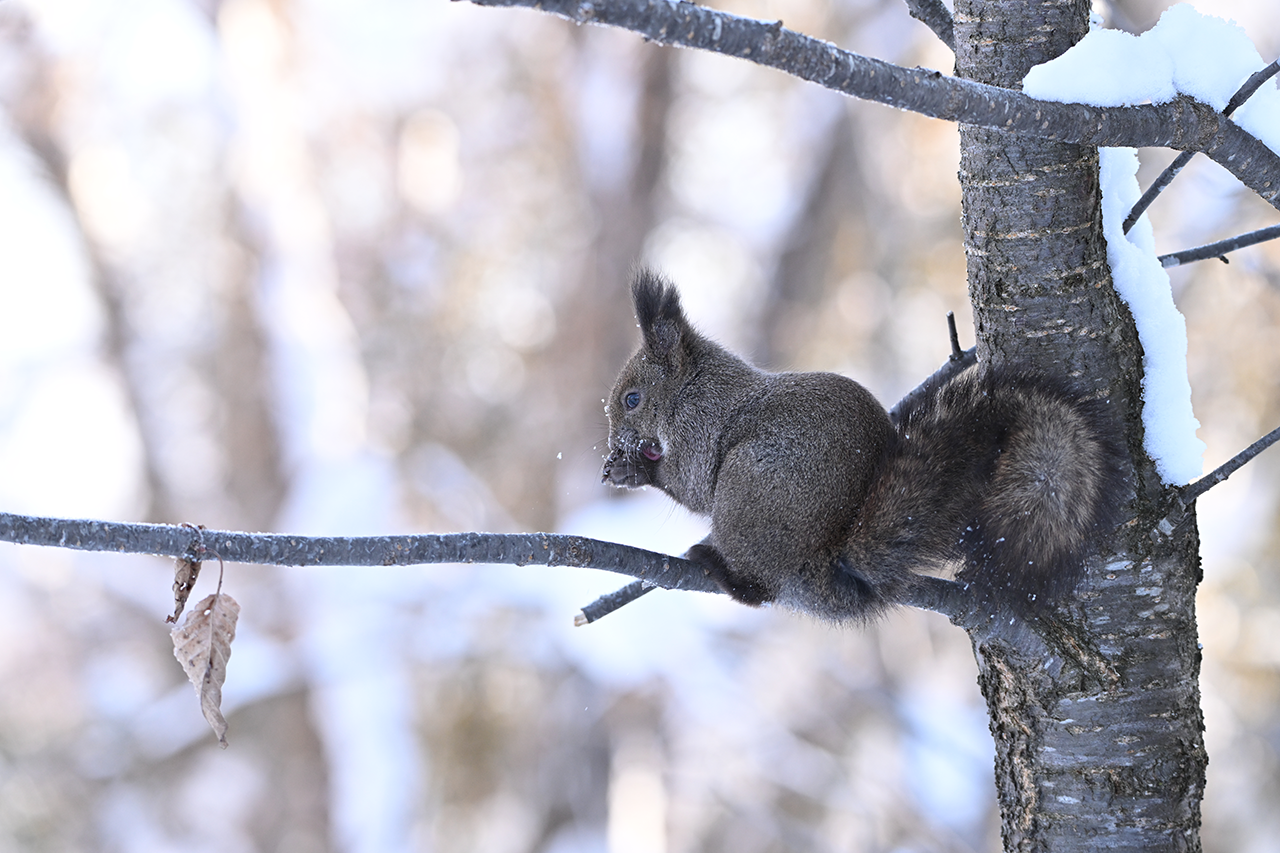Things to Bring
The main items of equipment you’ll need for wildlife photography are:
A camera
Z 9

Z 8

Lenses

Choose the lens according to the type of wildlife you will be photographing. The following lenses are recommended for wildlife photography.
- NIKKOR Z 400mm f/2.8 TC VR S (0NIKKOR Z 400mm f/2.8 TC VR S)
- NIKKOR Z 400mm f/4.5 VR S (0NIKKOR Z 400mm f/4.5 VR S)
- NIKKOR Z 600mm f/4 TC VR S (0NIKKOR Z 600mm f/4 TC VR S)
- NIKKOR Z 600mm f/6.3 VR S (0NIKKOR Z 600mm f/6.3 VR S)
- NIKKOR Z 800mm f/6.3 VR S (0NIKKOR Z 800mm f/6.3 VR S)
- NIKKOR Z 70-200mm f/2.8 VR S (0NIKKOR Z 70-200mm f/2.8 VR S)
- NIKKOR Z 100-400mm f/4.5-5.6 VR S (0NIKKOR Z 100-400mm f/4.5-5.6 VR S)
- NIKKOR Z 180-600mm f/5.6-6.3 VR (0NIKKOR Z 180-600mm f/5.6-6.3 VR)
- NIKKOR Z MC 105mm f/2.8 VR S (0NIKKOR Z MC 105mm f/2.8 VR S)
A battery
EN-EL18d (for Z 9)

EN-EL15c (for Z 8)

- A power bank (tested and approved for use: Anker PowerCore III Elite 25600 87W)
- Memory cards
- A Tripod
- A rain cover
Bring Spare Batteries, Memory Cards, and Battery Chargers
Most wildlife photography involves extended periods of time. It is recommended to bring extra fully-charged batteries, empty memory cards, and a battery charger.
Recommended Lenses for Wildlife Photography
Lenses recommended for wildlife photography and their characteristics are as follows.
NIKKOR Z 400mm f/2.8 TC VR S
A 400 mm lens with a built-in 1.4× teleconverter allows you to quickly change focal lengths to suit the scene and capture vivid images of even a small wild bird in motion.
NIKKOR Z 400mm f/4.5 VR S
A compact 400mm lens allows you to chase a wild bird handheld in vast landscapes and capture precious moments when you can even see their breath.
NIKKOR Z 600mm f/4 TC VR S
A 600 mm lens with a built-in 1.4× teleconverter allows you to quickly change focal lengths and capture the skin texture of wildlife with incredible realism.
NIKKOR Z 600mm f/6.3 VR S
A 600 mm lens, which has been significantly reduced in size and weight by adopting a Phase Fresnel (PF) element, allows you to easily track a wild bird in flight handheld.
NIKKOR Z 800mm f/6.3 VR S
An 800 mm lens, which has been reduced in size and weight by adopting a Phase Fresnel (PF) element, allows you to capture the tender moments of wild creatures as they are from a distance.
NIKKOR Z 70-200mm f/2.8 VR S
A 70–200 mm zoom lens, which combines the overwhelming imaging performance of an aperture of f/2.8 with a wide focal length range, is one of the basic equipment for wildlife photography.
NIKKOR Z 100-400mm f/4.5-5.6 VR S
A 100–400 mm zoom lens, which is small and lightweight yet has high optical performance, allows you to clearly capture even moving ferocious animals from a distance by combining smooth zooming over a wide range with animal-detection AF on the Z 9 and Z 8.
NIKKOR Z 180-600mm f/5.6-6.3 VR
A 180–600 mm zoom lens with an optimized weight balance and zoom mechanism allows you to capture precious moments without getting close to delicate small animals.
NIKKOR Z MC 105mm f/2.8 VR S
A 105 mm micro lens, with a focus on beautiful bokeh and resolution, allows you to capture small insects and other creatures in vivid detail.









